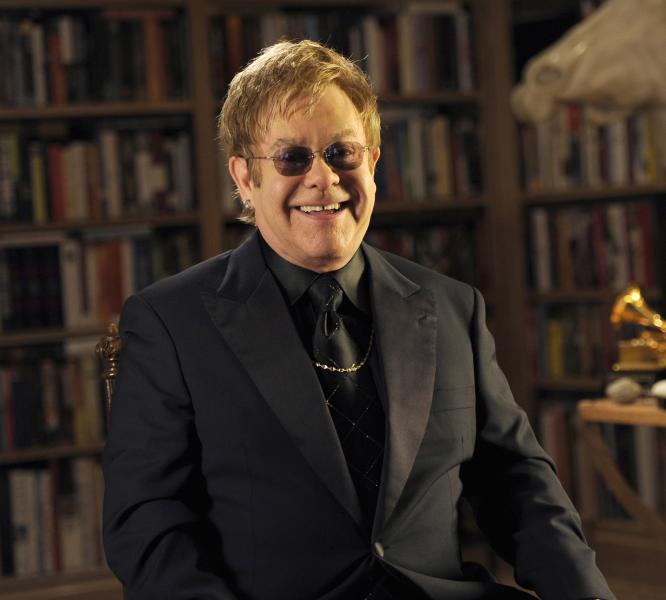Interview: '$ellebrity' Director Kevin Mazur

Rock 'n' Roll photographer Kevin Mazur's 2012 documentary, "$ellebrity," provides insight into our society's infatuation with the world of fame.
The film is uniquely centered around both the motives and repercussions of the paparazzi. It explores multiple perspectives through intimate video footage of celebrities and paparazzi, offering a revelatory mixture of experience and opinion.
Frequently photographed targets including Sarah Jessica Parker, Sheryl Crow, Jennifer Aniston, Elton Jon, and Kid Rock reveal horror stories about incessant and aggressive paparazzi disturbance.
Additionally, Mazur exposes the conversely less-favorable viewpoint through interviews with self-made paparazzi members such as Ricardo Mendoza and Darryn Lyons. Infused with history, fact, and personal anecdotes, $ellebrity not only tackles the issue of exploitation and celebrity obsession, but also illuminates the media industry through a vividly comparative lense.
Neon Tommy had the opportunity to speak with director/producer, Kevin Mazur, about his photography career, inspiration to create this documentary, and thoughts on the current climate of stardom and the public eye.
Q: You have been involved in the industry for many years now. Was there an incident/group of incidents that prompted you to begin making this film?
A: I have been a photographer in the entertainment business for about 30 years and I have seen it all, but the Princess Diana incident really impacted me and my perspective on the paparazzi. There was a period of time after her death when the presence and intensity of the paparazzi seemed to die down. Not long after, the weekly magazines started competing with each other for images and paying ridiculous amounts of money for exclusive paparazzi photos – especially photographs with children of celebrities. It was like the wild, wild west in the world of street photography. There were many incidents that prompted me to make the film, I was especially disturbed by all the stories of celebrities getting harassed with their kids. One day, I was walking down the street in Beverly Hills and there were about 25 paparazzi photographers shooting Paris Hilton. It was a crazy scene they were knocking into people on the the sidewalk, even this poor old lady that got knocked down to the ground. She was lying there on the ground as they stepped over and on her, it was despicable that not one of them even stopped to help her. I ran across the street to help her, she was so shaken up and crying.
Q: What was your objective in making this movie? What do you hope viewers take away from the story?
A: I wanted people to understand where all the celebrity photos they see in all the magazines and websites come from, sort of like in Food Inc, I was shocked how the food that I eat every day is produced. I’ve seen many segments on celebrity gossip and the paparazzi but I’ve never seen one tell it right. So we set out to make a film that is a roundtable discussion about the business, with the hope that it would start a conversation about our culture’s obsession with celebrity. There was a greater story behind the paparazzi than what was being served up, so we wanted to tell a story from a larger perspective.
Q: How did you decide which celebrities to feature in the movie? Were all of the stars that you reached out to willing to participate?
A: I wanted to interview celebrities who are targeted by magazines and photographers as they are impacted more than others. We cast a wide net knowing that scheduling would be challenging with our filming schedule. Jennifer Aniston and Sarah Jessica Parker are celebrities who are huge targets for the paparazzi that I needed to have in the film. Sarah is photographed by 10 to 20 photographers every day walking her children to school. It’s insane that a parent’s child has to endure that. Everyone I spoke to was interested in being involved but it really came down to availability.
Q: The documentary features multiple perspectives - the celebrities, the publicists, the paparazzi itself, etc. Why did you decide to do this?
A: I feel that the best documentaries are unbiased and let the viewer make their own decision. I intentionally structured my film this way.
Q: When do you think the peak of harassment by the paparazzi occurred? Do you think the current age of technology has had influence on this?
A: We live in a world with a 24/7 news cycle now with websites, blogs, and tweeter. People are constantly on their computers and smartphones viewing it, Facebooking it, sharing it, and commenting on celebrity photos. So there is a greater demand for celebrity photos to fill the pages of the magazines and websites. Technology has definitely added to the chaos because it never stops and enables anyone to pick up a camera become a photographer, which has increased the number of paparazzi out there. They get a camera, put in auto or program, and just start hanging out at celebrity hot spots.
Q: California legislature just passed a law supported by Jennifer Garner and Halle Berry that protects children of public figures from the paparazzi. Why do you think this is just happening now?
A: The new law is a result of both the heightened harassment by the paparazzi and the persistence of people who feel that their children are in harms way. The problem with passing laws that would essentially protect these people more thoroughly is that it impedes the First Amendment. It is a very sticky issue as there is a fine line between protecting some and not allowing all people (including paparazzi) to have their protected rights as US citizens.
Q: As a photographer, you take pictures of celebrities all the time. Where do you draw the line between acceptable and exploitative photography?
A: My credibility and reputation is always of paramount importance. I keep this in mind every time I shoot. I have built my business on trust and that has gotten me where I am today.
Q: Why do you think our society has such an obsession with fame and celebrity?
A: I think that people like an escape from their day-to-day lives. Celebrities have money and access to things that your average person will never have, so people like to live vicariously through them.
Learn more about Kevin Mazur's projects here.
Reach Staff Reporter Emily Mae Czachor here.



